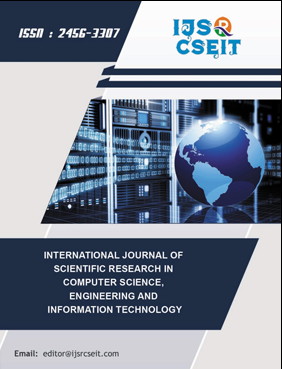Improving Clinical Efficiency and Reducing Medical Errors through NLP-enabled Diagnosis of Health Conditions from Transcription Reports
DOI:
https://doi.org/10.32628/CSEIT2283113Keywords:
Natural Language Processing, Medical Tran-scription Notes(s), Diagnostic Systems, Recurrent Neural Net-work, Long Short-Term Memory NetworkAbstract
Misdiagnosis rates are one of the leading causes of medical errors in hospitals, affecting over 12 million adults across the US. To address the high rate of misdiagnosis, this study utilizes 4 NLP-based algorithms to determine the appropriate health condition based on an unstructured transcription report. From the Logistic Regression, Random Forest, LSTM, and CNN-LSTM models, the CNN-LSTM model performed the best with an accuracy of 97.89%. We packaged this model into a authenticated web platform for accessible assistance to clinicians. Overall, by standardizing health care diagnosis and structuring transcription reports, our NLP platform drastically improves the clinical efficiency and accuracy of hospitals worldwide.
References
- J. T. James, “A new, evidence-based estimate of patient harms associated with hospital care,” J. Patient Saf., vol. 9, no. 3, pp. 122–128, Sep. 2013, doi: 10.1097/PTS.0b013e3182948a69.
- H. Singh, A. N. D. Meyer, and E. J. Thomas, “The frequency of diagnos-tic errors in outpatient care: estimations from three large observational studies involving US adult populations,” BMJ Qual. Saf., vol. 23, no. 9, pp. 727–731, Sep. 2014, doi: 10.1136/bmjqs-2013-002627.
- C. Koch, K. Roberts, C. Petruccelli, and D. J. Morgan, “The Frequency of Unnecessary Testing in Hospitalized Patients,” Am. J. Med., vol. 131, no. 5, pp. 500–503, May 2018, doi: 10.1016/j.amjmed.2017.11.025.
- Johns Hopkins Medicine Researchers Identify Health Conditions Likely to be Misdiagnosed. 2019. [Online]. Available: https://www.hopkinsmedicine.org/news/newsroom/news-releases/johns-hopkins-medicine-researchers-identify-health-conditions-likely-to-be-misdiagnosed
- D. P. Olson and D. M. Windish, “Communication discrepancies between physicians and hospitalized patients,” Arch. Intern. Med., vol. 170, no. 15, pp. 1302–1307, Aug. 2010, doi: 10.1001/archinternmed.2010.239.
- J. Howard et al., “Electronic health record impact on work burden in small, unaffiliated, community-based primary care practices,” J. Gen. In-tern. Med., vol. 28, no. 1, pp. 107–113, Jan. 2013, doi: 10.1007/s11606-012-2192-4.
- http://www.ahrq.gov/qual/prospectscare/prospects1.htm.
- R. C. Deo, “Machine Learning in Medicine,” Circulation, vol. 132, no. 20, p. 1920, Nov. 2015, doi: 10.1161/CIRCULATIONAHA.115.001593.
- D. Shen, G. Wu, and H.-I. Suk, “Deep Learning in Medical Image Analysis,” Annu. Rev. Biomed. Eng., vol. 19, p. 221, Jun. 2017, doi: 10.1146/annurev-bioeng-071516-044442.
- L. Rasmy et al., “Simple Recurrent Neural Networks is all we need for clinical events predictions using EHR data,” arXiv, Oct. 2021, doi: 10.13140/RG.2.2.13199.51368.
- H.-J. Kong, “Managing Unstructured Big Data in Healthcare System,” Healthcare Informatics Research, vol. 25, no. 1, p. 1, Jan. 2019, doi: 10.4258/hir.2019.25.1.1.
- Introduction to Random Forest in Machine Learning. 2022. [Online]. Available: https://www.section.io/engineering-education/introduction-to-random-forest-in-machine-learning
- Long Short-Term Memory (LSTM). 2022. [Online]. Available: http://www.bhlhdb.org/content/8/LSTM
- A. M. Alayba, V. Palade, M. England, and R. Iqbal, “A Combined CNN and LSTM Model for Arabic Sentiment Analysis,” in Machine Learning and Knowledge Extraction, Cham, Switzerland: Springer, 2018, pp. 179–191. doi: 0.1007/978-3-319-99740-7 12.
Downloads
Published
Issue
Section
License
Copyright (c) IJSRCSEIT

This work is licensed under a Creative Commons Attribution 4.0 International License.

